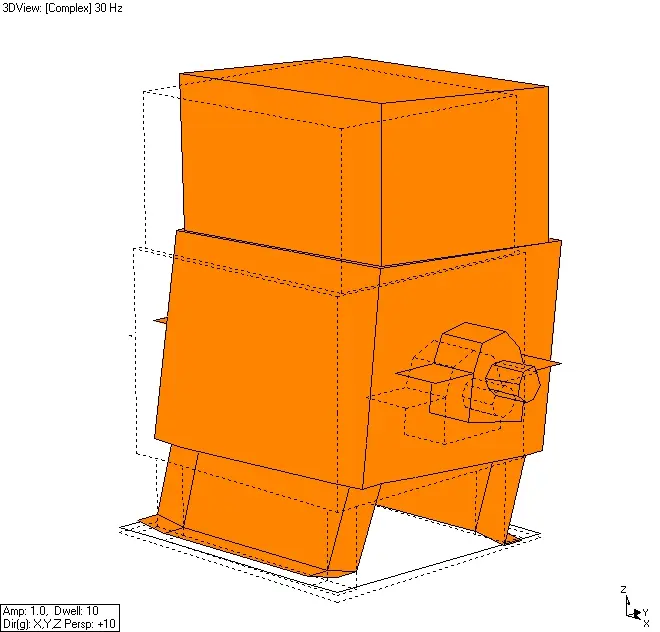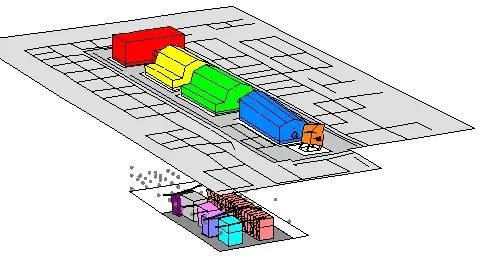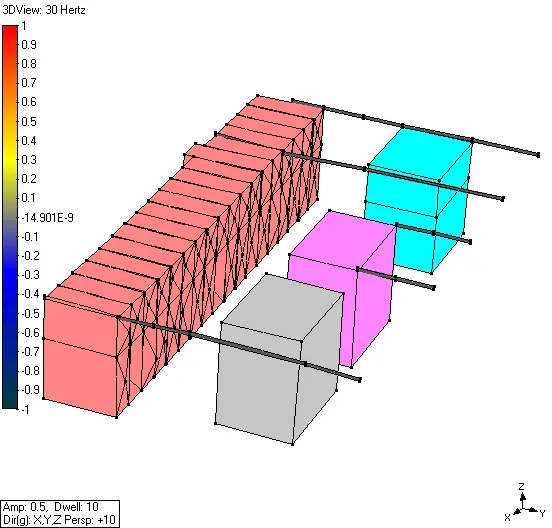Resonant Room Acoustics Exciting Destructive Vibration At A Nuclear Power
The 4kV switchgear cabinets at a nuclear power facility were experiencing reliability issues, seemingly due to shaking at the frequency of the turbine/ generator mounted on the deck above. Oddly, the floor of the switchgear cabinets had an extremely low level of vibration at the frequency in question, so was not the apparent source of the vibration.
MSI engineers noticed that, as they walked through the large building on the switchgear floor level, a throbbing sensation could be sensed at fairly regular intervals, which seemed to follow a checkerboard pattern. An experimental-data-based model was constructed over a period of several days of testing, which consisted of both hundreds of accelerometer measurements on the turbine deck machinery and decking, as well as on the switchgear cabinets and floor. In addition, MSI took sound pressure level data at hundreds of locations in three dimensions, in the switchgear room, and surrounding areas. All of the vibration motion, as well as pressure pulsation, was recorded and played back by superimposing the scaled up amplitude, as well as relative phasing versus a common reference (at a selected location and direction on the top of the generator exciter). The results were animated, and an example “snapshot” follows.
The exciter was exciting more than the generator! It was "drumming" the floor at 30Hz, with the deck responding with a "rug-flapping" mode.
The information value of the animation was extraordinary. It showed clearly that the exciter was acting as a vibration shaker, drumming the floor at 30 Hz, with the turbine deck responding with a “rug-flapping” mode at 30 Hz as well. The undulating motion of the turbine deck drove an acoustic mode of the major portion of the switchgear floor-level, the air “glowing” red and blue (for clarity, not plotted in the figure above) at acoustic antinode points in concert with the motion of the floor wave-shape and motion. In turn, the switchgear cabinet wall panels pulsed in and out in concert with the acoustic pressure pulsation next to the cabinet, the acoustic pulsation and cabinet response all occurring at 30 Hz.
Once this combined structural/ acoustic “Operating Deflection Shape” (ODS) was discerned from the test results, impact modal testing was performed on the various machines and floor of the turbine deck, as well as on the switchgear cabinet panels. The impact testing was all performed with low enough energy to not harm or trip the equipment, and was performed while the equipment remained operating, using MSI’s TAP™ time-averaged pulse technique. The modal testing confirmed that the switchgear high-vibration panels, the turbine deck, and the generator exciter all had natural frequencies close to 30 Hz, and pulses from a loud speaker confirmed the acoustic natural frequency of the switchgear room/ zone at 30 Hz.
An in-detail ODS of the exciter as well as the modal testing showed that its motion was a back-and-forth rocking motion. A structural natural frequency at approximately 30 Hz was identified as having tuned into resonance as one of the feet of the exciter had become “soft” with time. The resulting exciter motion, driven by typically acceptable levels of residual imbalance, excited the turbine deck resonance, which excited the switchgear floor-level acoustic resonance, which excited the switchgear panel resonances, which were damaging the switchgear bearings. Only detailed, careful combined acoustic and vibration ODS and modal testing could have unraveled this complex mystery. Once the root cause was known, a rotating machinery vibration practical solution could be identified.
 Rocking motion of the exciter at 30 Hz.
Rocking motion of the exciter at 30 Hz.
The combined acoustic – structural resonant vibration in the 4 kV switchgear was addressed by reducing the excitation at its source, the exciter. In-service structural bypass of the loose foot de-tuned the natural frequency from the 30 Hz excitation, dramatically reduced switchgear vibration, and eliminated the switchgear reliability issues without the need to pre-maturely shut the plant down, saving millions of dollars in revenue.
REAL-WORLD EXAMPLES AND CASE STUDIES
MSI In Action
Case Study
Improving Cost of Ownership with Vibration Risk Reduction: 1/2
Focusing on vibration and dynamics issues during the plant design phase of a project pays off with smoother commissioning and lower cost of ownership over the plant’s life.
Case Study
Simulating the Performance of a Spinal Implant
A manufacturer of an innovative spinal implant approached MSI for help in assessing the implant’s structural integrity.
Case Study
Dynamic Analysis of a Street Sweeper for the Manufacturer
Troubleshoot and identify potential opportunities for early bearing failure, MSI performed experimental modal analysis (EMA) and operational deflection shape (ODS) tests on a prototype unit for the manufacturer.


